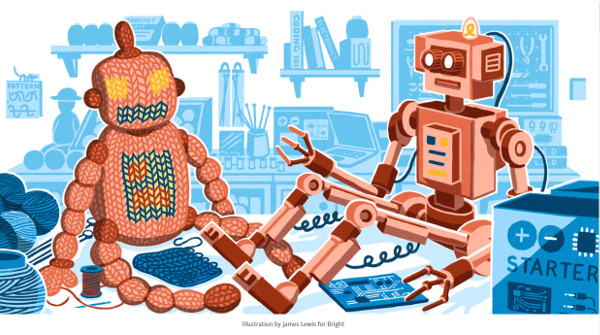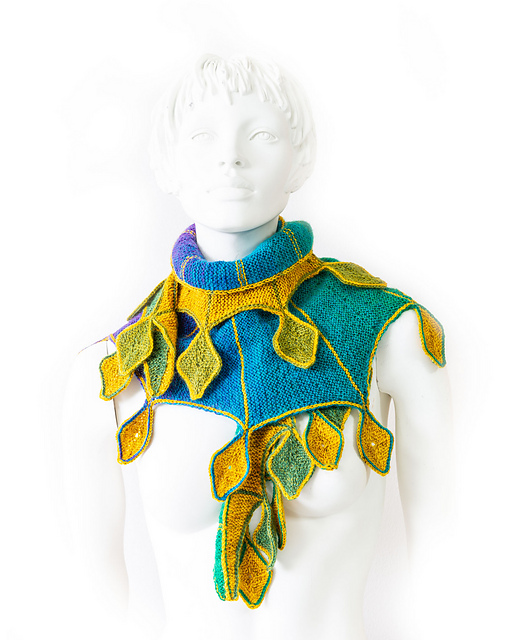 This one is kind of a long read, but I think it’s really interesting as a knitter and a mom of a girl who I hope can stay engaged in math and science as she gets older.
This one is kind of a long read, but I think it’s really interesting as a knitter and a mom of a girl who I hope can stay engaged in math and science as she gets older.
The post, “Girls Knit Their Way to a Math Career” looks at how knitting and other fiber arts can be used to encourage girls to engage in mathematical thinking and problem solving that just might lead the to careers in science and math in the future.
I hope more schools and programs will get this idea, that knitting is so much more than handcraft. It would be valuable even if it just helped kids to focus, lower their stress levels and gain confidence as they learn new skills and solve problems, but it’s really more than that. Knitting and crochet can not only be used to explore and explain higher mathematical concepts, the act of designing a knitting project — and sometimes even knitting from a pattern — requires problem solving and math skills.
Sometimes the mathematical connections are obvious, as when I spent a hectic morning with the Pythagorean Theorem while designing a set-in sweater sleeve. Other times it’s not as obvious, or we don’t think about the fact that we’re doing math when we knit a gauge swatch or adjust a pattern. The more experience and comfort kids have with these concepts in a non-classroom context can only benefit them, even if it doesn’t lead to more women in STEM careers.
Knitting might also be a way to reach girls with STEM projects when those girls aren’t interested in robots and computer gaming, which are classic points of entry that might appeal more to boys.
I know I’m going to keep encouraging my daughter in both her fiber arts and her mathematical studies, and I can’t wait to see where that all goes for her.
Have you ever taught kids to knit or crochet? Do you talk about it being math? Or in your own craft do you think about it being math? I’d love to hear your thoughts.
[Illustration by James Lewis for Bright.]
 I’m honestly not totally sure what to say about the Sun King shawl pattern from Ursa Major Knits other than isn’t this cool? You should probably make one.
I’m honestly not totally sure what to say about the Sun King shawl pattern from Ursa Major Knits other than isn’t this cool? You should probably make one.
Girls and boys too!
When I was in high school, the girls were discouraged (sometimes severely) to avoid math and science and to go toward English, and typing, and so forth. As I’ve aged and gotten into quilting I realized I certainly would have had easier lessons if I had been taught in a mode (piecing fabric angles for geometry, compositions of threads and battings for some science concepts). Thank you for a well written essay!